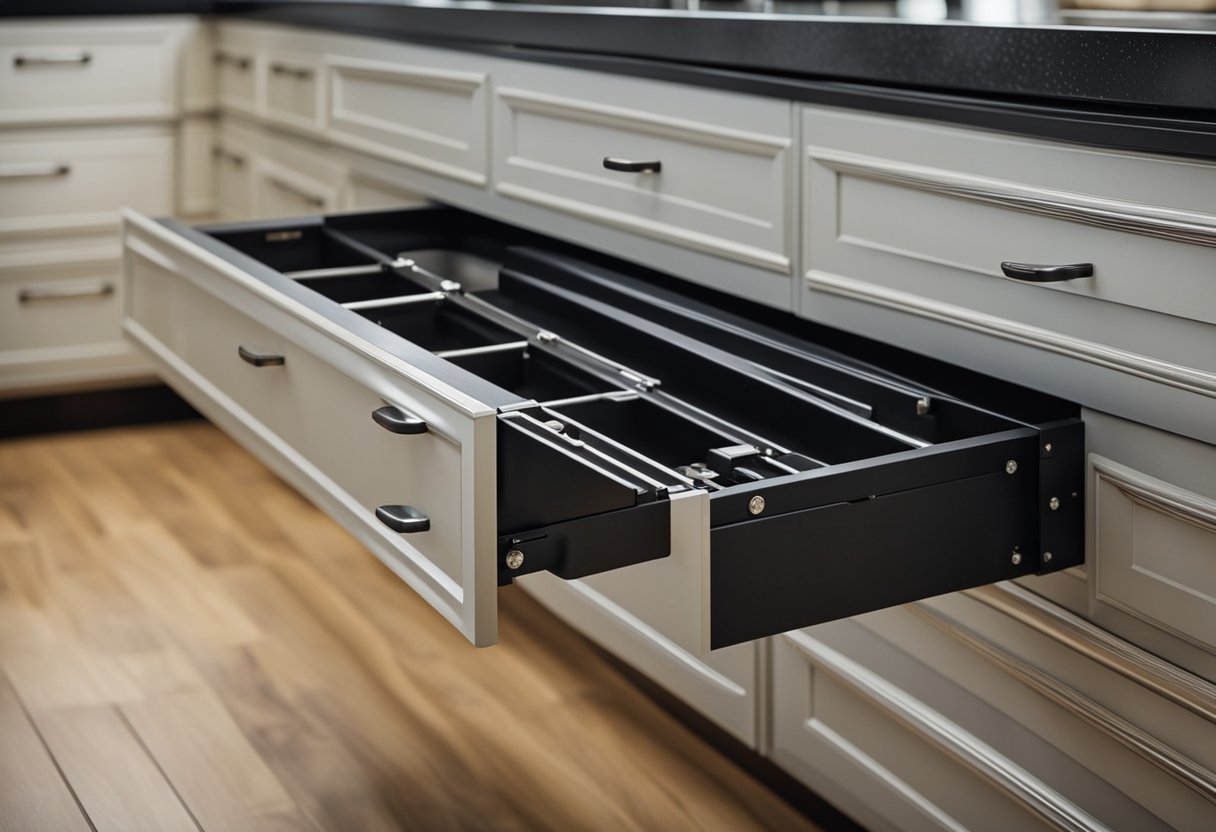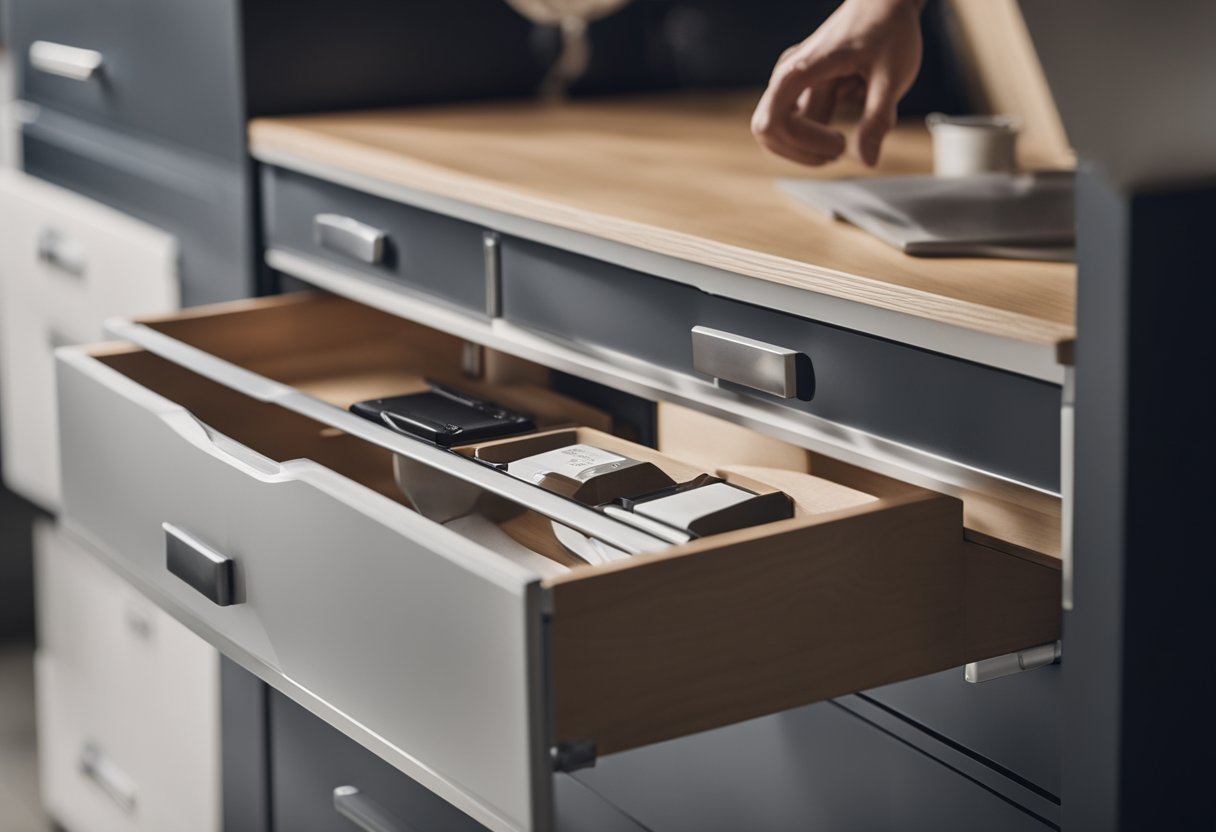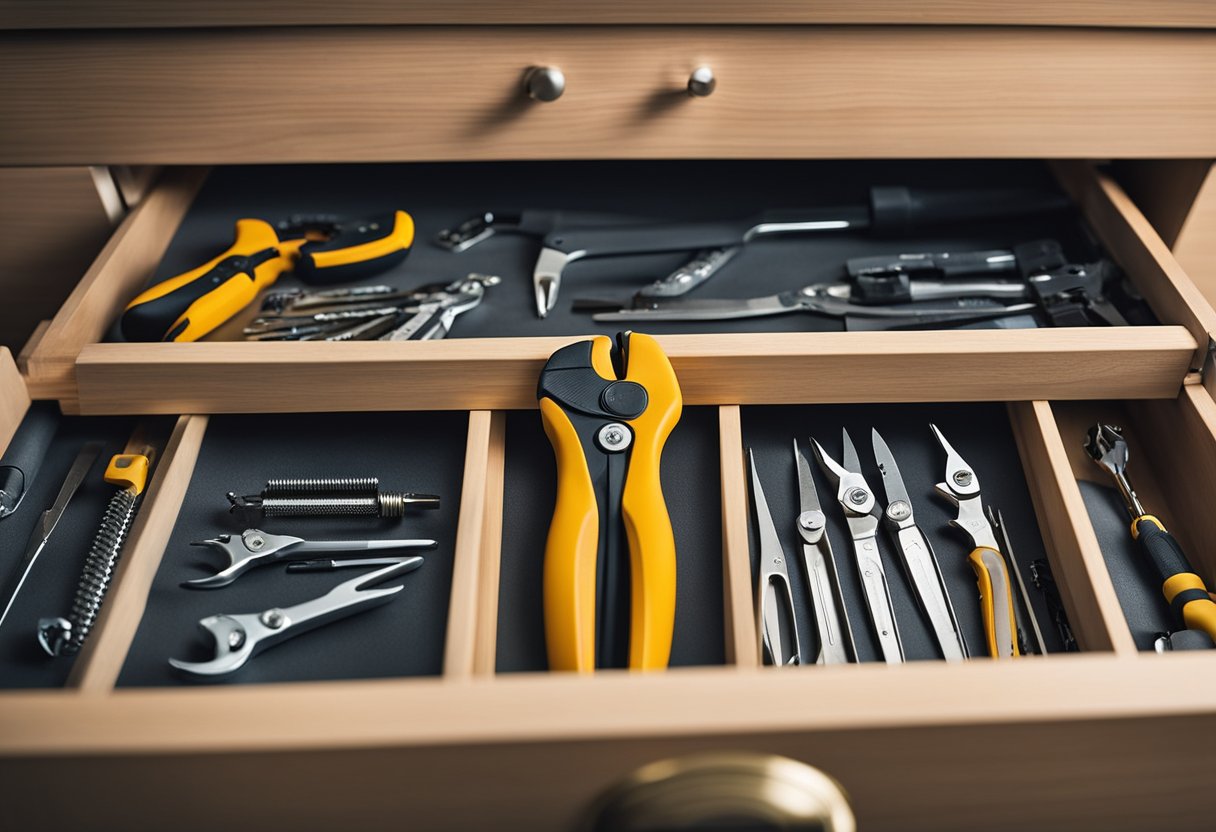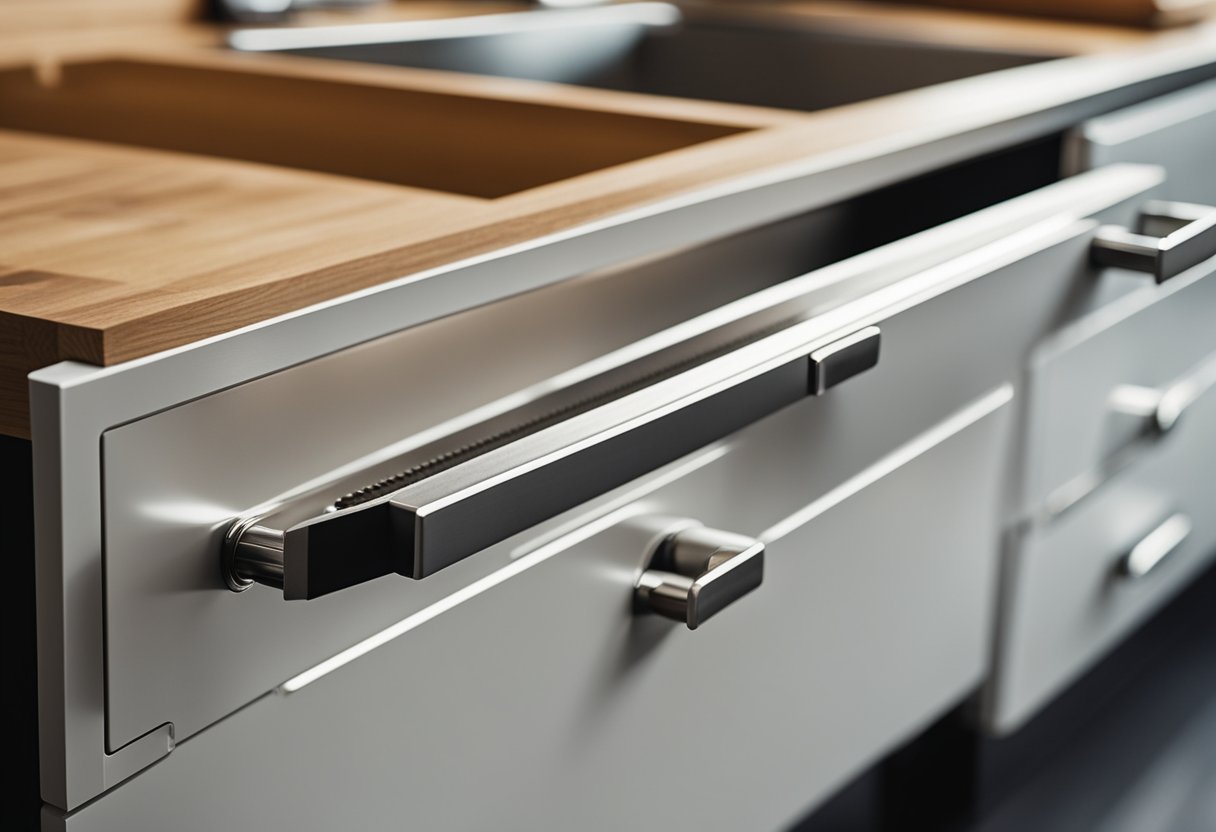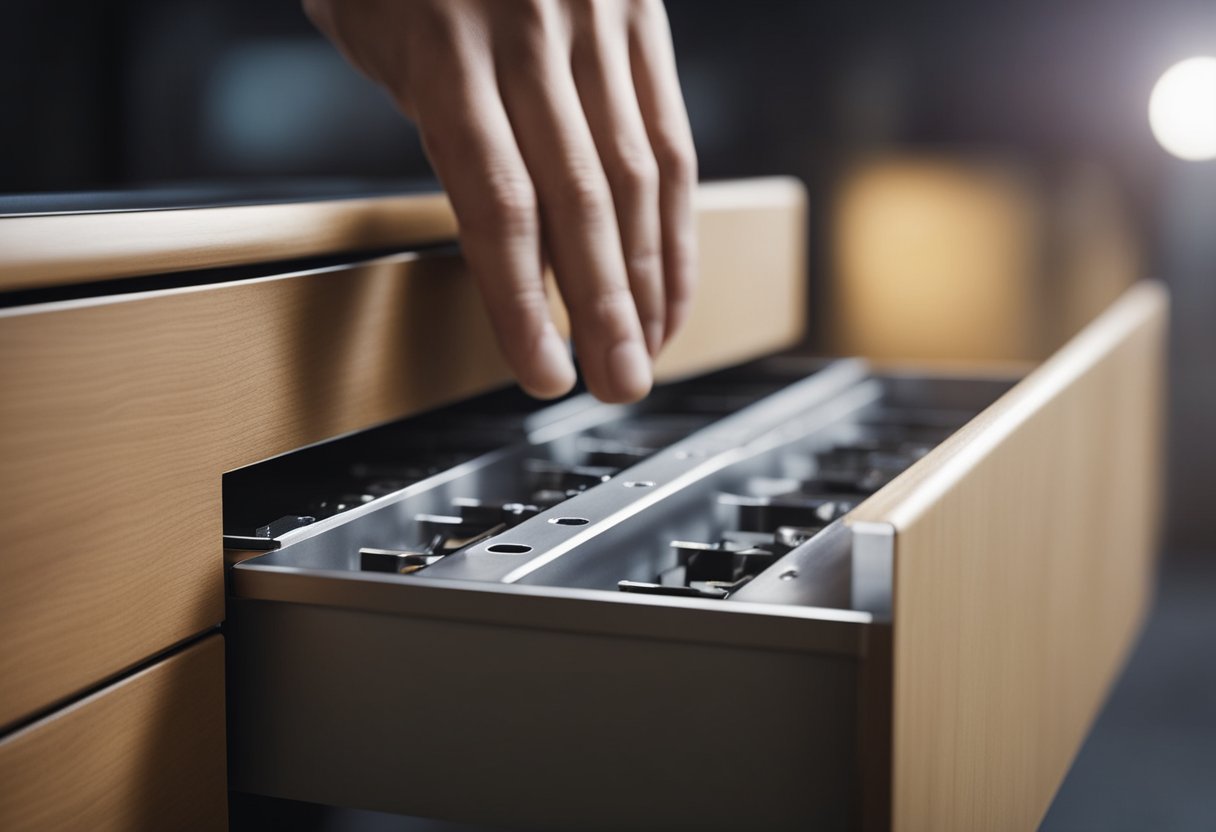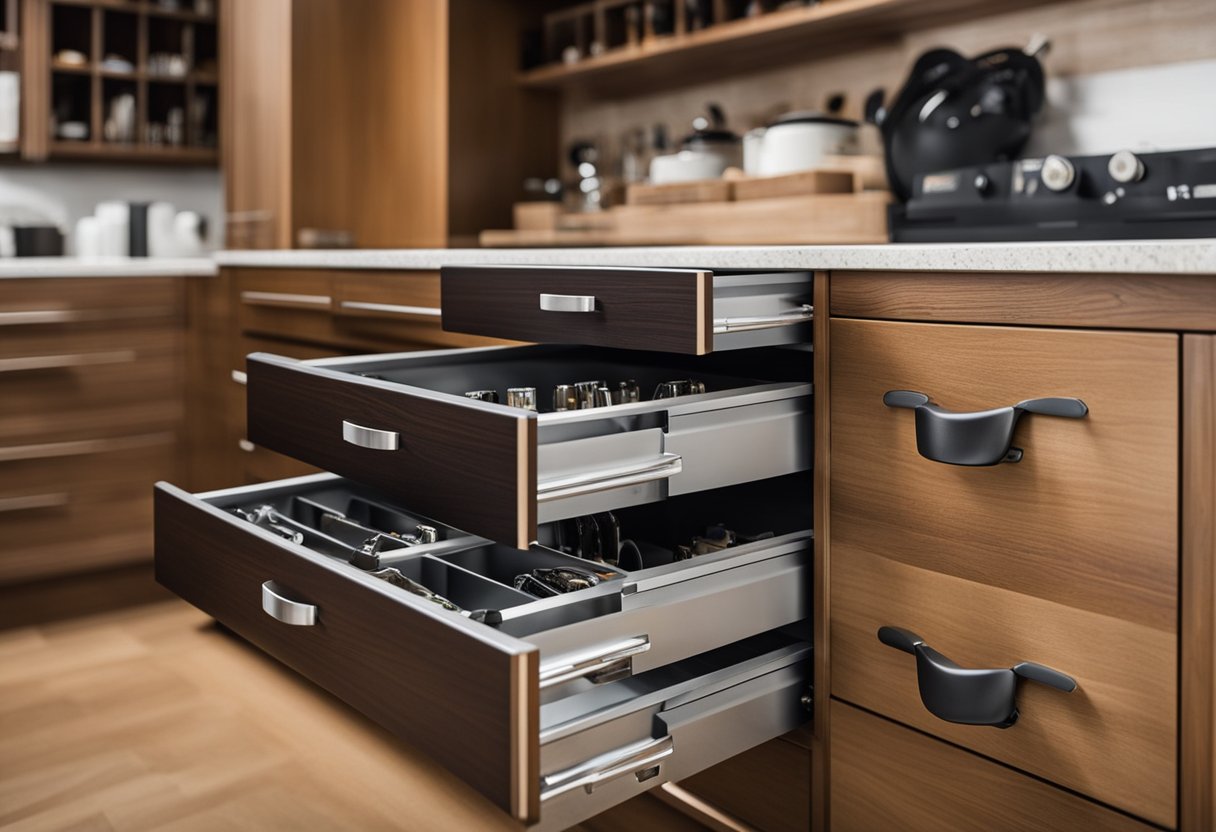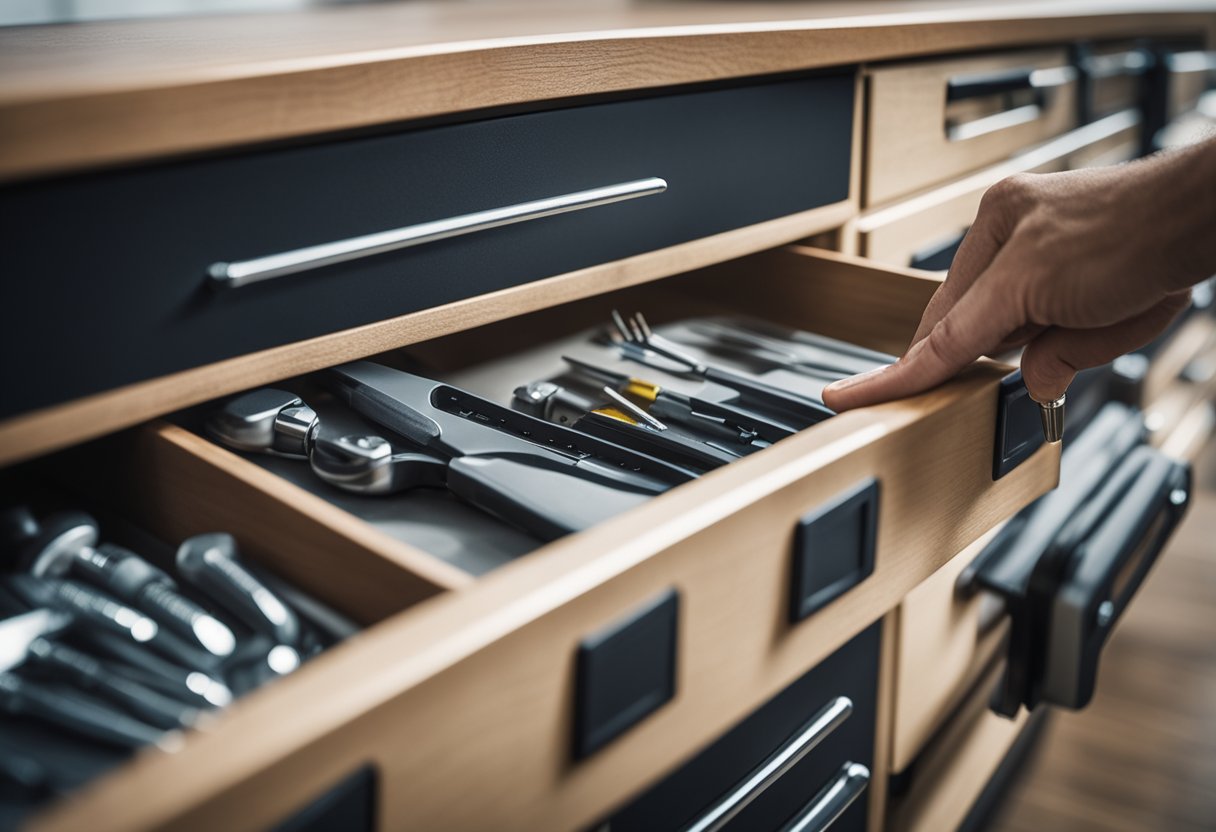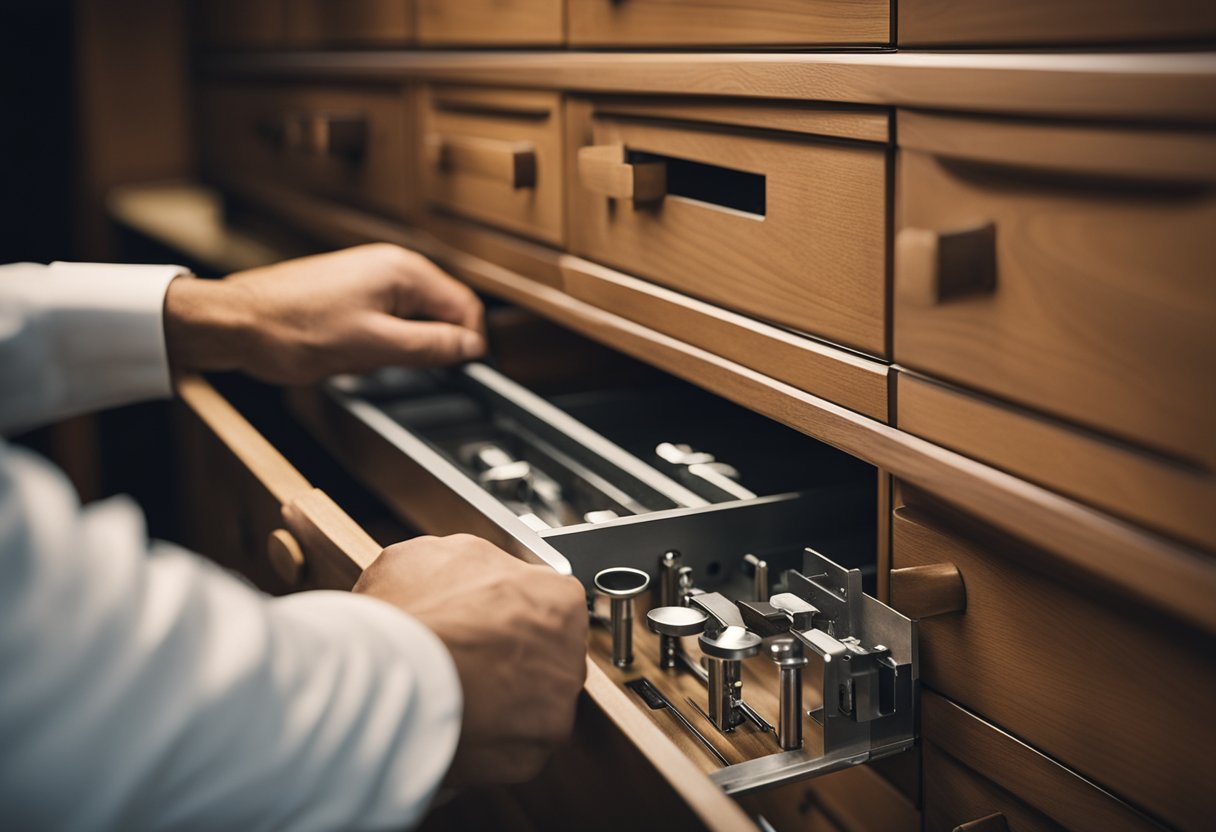Putting a drawer back in may seem like a daunting task, but with a little know-how and the right tools, it can be a quick and easy fix. Whether you’re dealing with a kitchen cabinet drawer or a dresser drawer, the process is relatively similar. In this article, I’ll guide you through the steps to put a drawer back in, from understanding the basics to troubleshooting common issues.
Understanding the basics of how drawers work is key to successfully putting them back in. Drawers typically slide on rails or tracks, and these can sometimes become misaligned or damaged. Before attempting to put a drawer back in, it’s important to make sure that the rails or tracks are in good condition and properly aligned. Additionally, some drawers may have safety catches or clips that need to be disengaged before they can be removed or reinstalled.
To put a drawer back in, you’ll need a few basic tools such as a screwdriver, pliers, and a level. You may also need replacement parts such as new rails or clips if the old ones are damaged. It’s important to prepare your workspace and have all of the necessary tools and parts on hand before beginning the process. With the right preparation and tools, putting a drawer back in can be a simple and straightforward task.
Key Takeaways
- Understanding the basics of how drawers work is key to successfully putting them back in.
- Proper preparation and having the right tools on hand is important before beginning the process.
- Troubleshooting common issues such as misaligned or damaged rails can make the process easier.
Understanding the Basics
When it comes to putting a drawer back in, it’s important to understand the basics of how the drawer is designed to fit into its housing. A drawer typically slides in and out of a cabinet or piece of furniture on a set of tracks or slides. These tracks are usually made of metal or plastic and are attached to the sides of the cabinet or furniture.
Before attempting to put the drawer back in, it’s important to inspect the tracks and make sure they are clean and free of debris. If the tracks are dirty or damaged, the drawer may not slide smoothly and could become stuck or difficult to open.
Once you’ve inspected the tracks, it’s time to reattach the drawer to the slides. Most drawers are attached to the slides with screws, which are usually located on the sides of the drawer. Make sure you have the right size screwdriver for the job, and be careful not to overtighten the screws, as this could cause the wood to split.
If your drawer has a lock, you may need to adjust the level of the drawer to ensure that it lines up properly with the lock. This can be done by adjusting the screws on the back of the drawer or by using shims to level the drawer.
Overall, putting a drawer back in is a fairly simple process that can be done with a few basic tools and some patience. By understanding the basics of how the drawer is designed to fit into its housing, you can quickly and easily fix any issues and get your drawer back in working order.
Preparation and Tools Needed
Before putting a drawer back in, it’s essential to have the right tools and prepare the area properly. Here are some things to consider:
Tools Needed
- Screwdriver: Depending on the type of drawer, you may need a flathead or Phillips screwdriver to remove the slides or rails.
- Drill: If you need to drill new holes for the slides or rails, a drill will come in handy.
- Materials: If the slides or rails are damaged or missing, you’ll need to purchase new ones.
- Label: If you’re removing multiple drawers, it’s a good idea to label them to make sure you put them back in the right place.
- Cleaning: Before putting the drawer back in, make sure to clean the area thoroughly. This will prevent any dirt or debris from interfering with the drawer’s movement.
- Lazy Susan: If you’re dealing with a corner cabinet, a lazy susan may be involved. Make sure to remove any items from the lazy susan before attempting to put the drawer back in.
By having the right tools and preparing the area properly, you can ensure a smooth and efficient process when putting a drawer back in.
Step-by-Step Guide to Putting a Drawer Back in
Putting a drawer back in can be a simple task if you follow the right steps. In this guide, I will take you through the process step by step, so you can successfully put a drawer back in place.
Aligning the Tracks
The first step in putting a drawer back in is to align the tracks. Check the tracks to ensure they are clean and free of debris. If they are dirty, use a soft cloth to clean them. Next, align the tracks by inserting the drawer glides or runners into the slots on the tracks. Make sure the drawer is level and aligned with the cabinet.
Securing the Drawer
Once the drawer is aligned with the tracks, it’s time to secure it in place. Depending on the type of drawer slides, you may need to secure the drawer with screws. If you have a ball-bearing drawer, you can simply snap it back into place. If you have metal or wood slides, you may need to use screws to secure the drawer to the slides.
To secure the drawer, locate the screw holes on the slides and align them with the holes on the drawer. Insert the screws and tighten them with a screwdriver. Be careful not to overtighten the screws, as this can cause the wood to split.
Finally, test the drawer by pulling it in and out to ensure it moves smoothly and doesn’t catch on anything. If the drawer doesn’t glide smoothly, you may need to adjust the alignment of the tracks or the position of the drawer.
In conclusion, putting a drawer back in is a simple task if you follow the right steps. By aligning the tracks and securing the drawer, you can successfully put a drawer back in place.
Troubleshooting Common Issues
https://www.youtube.com/watch?v=7m5N_iTMb3E&embed=true
When putting a drawer back in, you may encounter some common problems. Here are some troubleshooting tips to help you fix these issues:
Drawer is Not Aligning Properly
If the drawer is not aligning properly, check the slots or runners to see if they are damaged or blocked. If they are, clean them and remove any debris to ensure smooth movement of the drawer. If the slots or runners are damaged, replace them.
Drawer is Stuck or Not Sliding Smoothly
If the drawer is stuck or not sliding smoothly, check the rollers to see if they are damaged or dirty. Clean them with a soft cloth or replace them if they are damaged. You can also apply a lubricant to the rollers to ensure smooth movement of the drawer.
Drawer is Not Closing Properly
If the drawer is not closing properly, check the alignment of the drawer track. If it is misaligned, adjust it so that the drawer fits snugly into the track. You can also check the alignment of the drawer itself. If it is misaligned, adjust it so that it fits properly into the track.
Drawer is Not Level
If the drawer is not level, check the alignment of the drawer track and the drawer itself. If they are aligned properly, check the level of the surface the drawer is sitting on. If it is not level, adjust it so that the drawer is level.
By following these troubleshooting tips, you can easily fix common issues when putting a drawer back in.
Maintaining Your Drawers
As someone who has dealt with a lot of drawers over the years, I know how frustrating it can be when they don’t work properly. That’s why I always make sure to maintain my drawers to keep them in good condition. Here are some tips for maintaining your drawers:
Cleaning
One of the simplest things you can do to maintain your drawers is to keep them clean. Dirt, dust, and debris can build up over time and cause your drawers to stick or become difficult to open and close. To clean your drawers, simply remove them from the cabinet and wipe them down with a damp cloth. You can also use a vacuum cleaner to remove any debris that may be stuck in the corners or crevices.
Lubricants
Another important aspect of maintaining your drawers is lubrication. Drawer slides and tracks can become dry and sticky over time, which can cause your drawers to stick or become difficult to open and close. To prevent this, apply a small amount of lubricant to the slides and tracks. Be sure to use a lubricant that is safe for use with wood, such as silicone spray or beeswax.
Maintenance
In addition to cleaning and lubrication, it’s important to perform regular maintenance on your drawers. Check the screws and hardware to make sure they are tight and secure. If any screws are loose, tighten them with a screwdriver. If any hardware is damaged or broken, replace it as soon as possible to prevent further damage to your drawers.
Drawer Dividers
Drawer dividers are a great way to keep your drawers organized and prevent items from shifting around during use. They can also help prevent damage to your drawers by keeping items from rubbing against each other. If you don’t already have drawer dividers, consider investing in some to help keep your drawers in good condition.
Washers
Finally, if you notice that your drawers are wobbling or not sliding smoothly, check the washers. Washers are small metal discs that are placed between the screw and the wood to help distribute the load and prevent damage to the wood. If the washers are missing or damaged, replace them as soon as possible to prevent further damage to your drawers.
By following these simple tips, you can keep your drawers in good condition and prevent them from becoming a source of frustration. Remember to clean your drawers regularly, lubricate the slides and tracks, perform regular maintenance, use drawer dividers, and check the washers. With a little bit of effort, you can keep your drawers working smoothly for years to come.
Drawer Types and Their Differences
When it comes to putting a drawer back in, it is important to know the type of drawer you are dealing with. Different types of drawers have different mechanisms and assembly methods. Here are some of the most common types of drawers you might encounter:
Kitchen Cabinet Drawers
Kitchen cabinet drawers are often made of wood or metal and are typically mounted on ball-bearing slides. These slides allow the drawer to glide in and out smoothly. To put a kitchen cabinet drawer back in, you will need to align the slides on the drawer with the slides on the cabinet and push the drawer in until it clicks into place.
Dresser Drawers
Dresser drawers are usually made of wood and are mounted on wooden slides. These slides can wear down over time, causing the drawer to stick or become difficult to open and close. To put a dresser drawer back in, you will need to lift the drawer slightly and align the slides on the drawer with the tracks on the dresser. Then, gently push the drawer in until it clicks into place.
Plastic Drawers
Plastic drawers are often found in storage containers or small organizers. These drawers are usually easy to remove and put back in. To put a plastic drawer back in, simply align the tracks on the drawer with the tracks on the container and slide it in until it clicks into place.
Easy Access Drawers
Easy access drawers are typically found in office furniture or filing cabinets. These drawers have a mechanism that allows them to open fully, providing easy access to the contents. To put an easy access drawer back in, you will need to align the tracks on the drawer with the tracks on the cabinet and push the drawer in until it clicks into place.
Pull-Out Shelves
Pull-out shelves are often found in kitchen cabinets or pantry organizers. These shelves are mounted on slides and can be pulled out for easy access to the contents. To put a pull-out shelf back in, you will need to align the slides on the shelf with the tracks on the cabinet and push the shelf in until it clicks into place.
Bedroom Furniture Drawers
Bedroom furniture drawers can come in a variety of materials and styles. Some may have ball-bearing slides, while others may have wooden slides. To put a bedroom furniture drawer back in, you will need to align the slides on the drawer with the tracks on the dresser or nightstand and push the drawer in until it clicks into place.
Knowing the type of drawer you are dealing with and how it is assembled will help you put it back in correctly and ensure that it functions properly.
Cost and Where to Buy
When it comes to putting a drawer back in, you may need to replace some hardware or even the entire drawer. The cost of replacing a drawer can vary depending on the size, material, and design of the drawer box.
The cost of a new drawer box can range from $32.94 for a basic plywood box to $46.40 for a birch box with dovetail joints. If you’re looking for a more high-end option, soft-close drawer slides can cost anywhere from $5 to $230 for a standard soft-close side mount. Keep in mind that you may also need to purchase tools if you don’t already have them in your toolbox.
To find affordable replacement parts, you can check with the manufacturer of your furniture or cabinet. They may offer replacement parts or have a list of authorized retailers that carry the parts you need. You can also check online retailers like Amazon Associates, which offer a wide range of hardware and replacement parts for furniture and cabinets.
When purchasing replacement parts online, be sure to check the dimensions and specifications to ensure you are getting the correct size and style for your drawer. It’s also a good idea to read reviews from other customers to get an idea of the quality and durability of the product.
In summary, the cost of replacing a drawer can vary depending on the size, material, and design of the drawer box. You can find replacement parts from the manufacturer or online retailers like Amazon Associates. Be sure to check the dimensions and specifications and read reviews before making a purchase.
Conclusion
Putting a drawer back in its place can seem like a daunting task, but with the right tools and techniques, it can be done quickly and easily. Throughout this article, I have covered the installation process for drawers and provided tips on how to make the process easier.
As a home decorator, it is important to have a good understanding of how to put drawers back in their place. This will help you to keep your furniture in good condition and ensure that it functions properly. By following the steps outlined in this article, you can easily put drawers back in their place without causing any damage to the furniture.
Remember to always be patient and take your time when putting a drawer back in place. Rushing the process can lead to mistakes and cause damage to both the drawer and the furniture. By following the steps outlined in this article, you can be confident in your ability to put drawers back in their place.
In summary, putting a drawer back in its place is a simple process that can be done quickly and easily. By following the steps outlined in this article, you can ensure that your furniture functions properly and remains in good condition.
Frequently Asked Questions
How do you reattach a drawer to its slides?
To reattach a drawer to its slides, start by aligning the slides on the drawer with the corresponding slides on the cabinet. Once aligned, push the drawer back into the cabinet until it clicks into place. If the drawer still doesn’t slide smoothly, try adjusting the slides by loosening the screws that hold them in place and repositioning them slightly.
How do you put a drawer on a roller slide?
To put a drawer on a roller slide, first, remove the drawer from the cabinet by pulling it straight out. Next, line up the rollers on the slide with the corresponding notches on the drawer. Once aligned, push the drawer back into the cabinet until it clicks into place. If the drawer still doesn’t slide smoothly, try adjusting the rollers by loosening the screws that hold them in place and repositioning them slightly.
What is the process for reinserting a drawer on ball bearing slides?
To reinsert a drawer on ball bearing slides, start by removing the drawer from the cabinet by pulling it straight out. Next, line up the ball bearings on the slide with the corresponding notches on the drawer. Once aligned, push the drawer back into the cabinet until it clicks into place. If the drawer still doesn’t slide smoothly, try adjusting the slides by loosening the screws that hold them in place and repositioning them slightly.
How do you adjust drawer slides?
To adjust drawer slides, start by loosening the screws that hold them in place. Next, reposition the slides slightly until they are aligned with the corresponding slides on the cabinet. Once aligned, tighten the screws to secure the slides in place. If the drawer still doesn’t slide smoothly, try adjusting the slides again until you achieve the desired result.
Can you provide step-by-step instructions for reinstalling a Rev a Shelf drawer?
Yes, to reinstall a Rev a Shelf drawer, start by removing the drawer from the cabinet by pulling it straight out. Next, remove the slides from the drawer by unscrewing them from the bottom. Then, attach the slides to the corresponding notches on the drawer and push the drawer back into the cabinet until it clicks into place. If the drawer still doesn’t slide smoothly, try adjusting the slides by loosening the screws that hold them in place and repositioning them slightly.
Is there a way to fix a drawer that keeps falling off its slides?
Yes, to fix a drawer that keeps falling off its slides, start by removing the drawer from the cabinet by pulling it straight out. Next, inspect the slides for damage or wear and replace them if necessary. If the slides are in good condition, try adjusting them by loosening the screws that hold them in place and repositioning them slightly. If the problem persists, consider adding additional support to the bottom of the drawer, such as a small block of wood or a metal bracket.

Hi, I’m Sal Muller of Tooltrip.com. My DIY experience led me to understand essential power tools for home projects. Tooltrip.com guides enthusiasts and professionals in choosing right tools for any job. I provide concise top tool reviews for easier, efficient DIY.

